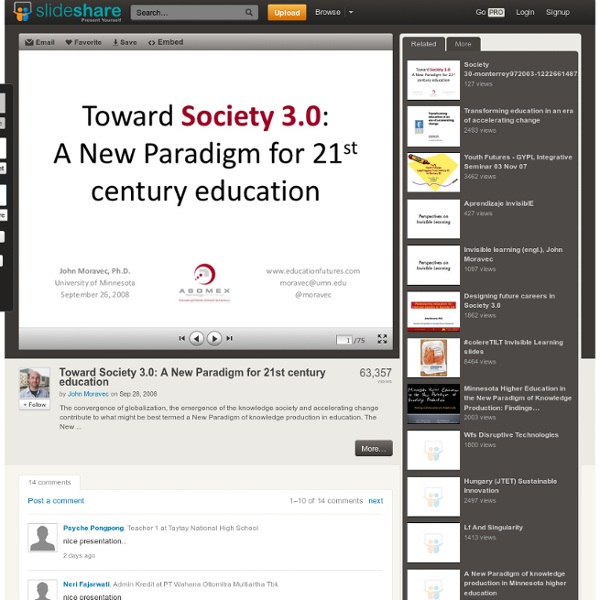



6 Channels Of 21st Century Learning 6 Channels Of 21st Century Learning This post has been updated from a 2013 post by Terry Heick At TeachThought, we constantly wrestle with two big questions: How do people learn, and how can they do it better in a constantly evolving context? In pursuit, the theme of “21st century learning” often surfaces, a popular label that, while perhaps cliche, still seems to be necessary as we iterate learning models, fold in digital media resources, and incorporate constantly changing technology to an already chaotic event (i.e., learning). This has produced our 9 Characteristics of 21st Century Learning, a kind of overview we created in 2009, and our Inside-Out School model that is meant to be a kind of bridge between current school design and what’s possible moving forward. Learning Channels Above is a kind of “2.0” of the “9 Characteristics of 21st century Learning” that is framed around the idea of “learning channels.” In this model, you’ll notice 6 distinct channels. 1. 2. 3. 4. 5. 6.
What is 21st Century Education Revised August 2008. Your Assignment, Should You Choose to Accept It . . . Like Alice, many educators, policy makers and even the general public respond resoundingly with "That's impossible!" when challenged to adopt a new paradigm of education for the 21st century. Most people today adhere to a paradigm of education that is strictly 19th century. But, like the Queen, a growing number of educators are believing in and accomplishing "the impossible". Web 2.0 and new Social Communities Dr. What is 21st century curriculum? What does all this mean for how we design and build schools? 1. References Kellner, Douglas; New Media and New Literacies: Reconstructing Education for the New Millennium Grant, Jodi, Director of the After School Alliance; Fourteen Million Kids, Unsupervised McLeod, Scott, Dangerously Irrelevant Time, Learning and Afterschool Task Force, A New Day for Learning Belasco, James A., Teaching the Elephant to Dance, 1991 Wesch, Michael, Ph.
Has Education arrived in the 21st Century yet? This interesting table, comparing 20th and 21st Century learning, was conceived by William Rankin, a well credentialed doctor of Education from ACU, Texas. This graphic, which I found on Educational Technology and Mobile Learning, was originally published on iThinkEd in 2007, where you can read Rankin’s full thoughts that led to his creation of this table. What’s fascinating for me is the fact this was written 7 years ago. It doesn’t date the message. It challenges us as educators to reflect on how far we have actually progressed. I started hearing the talk about 21st Century Learning back in the 90s and here we are in 2013 and, looking at this chart from Rankin, we have to ask ourselves; for all the talk and planning, have we really moved out of the 20th Century and embraced what this nebulous concept of 21st Century is really about? Of course, revolutions aren’t meant to be easy. What does it look like at your school? Now I’d be kidding myself if I could achieve all that I ask here.